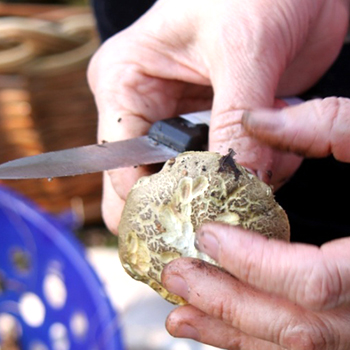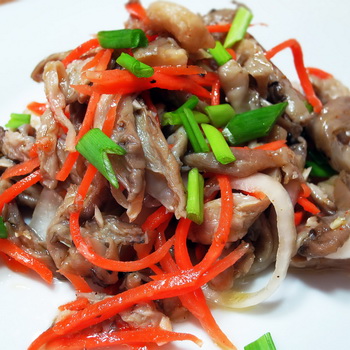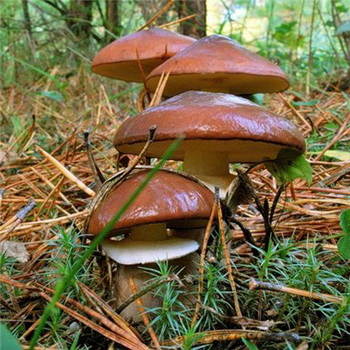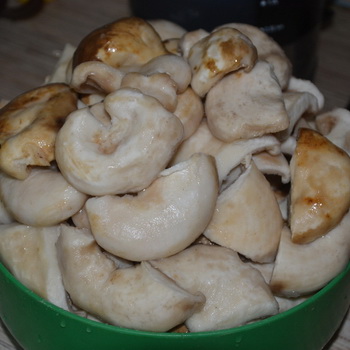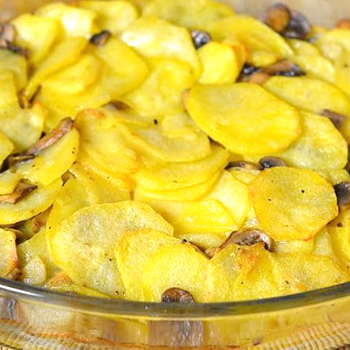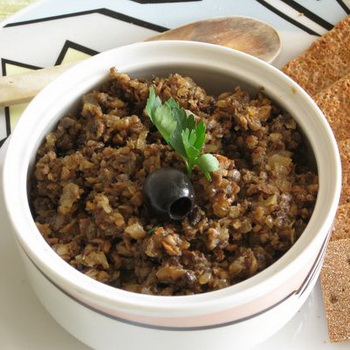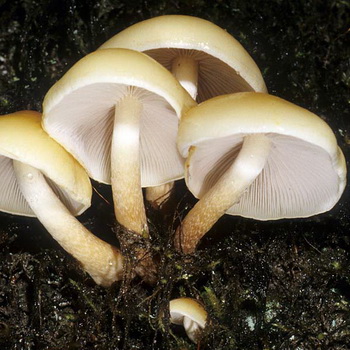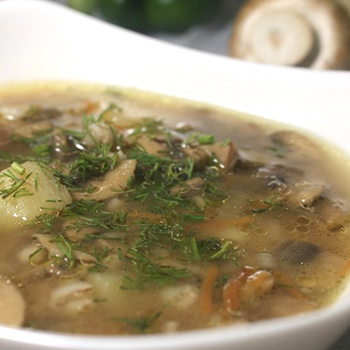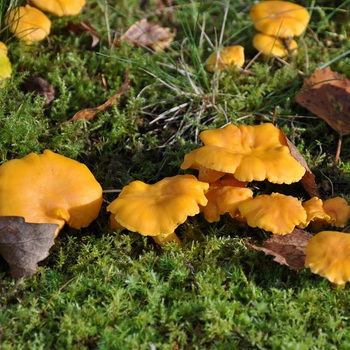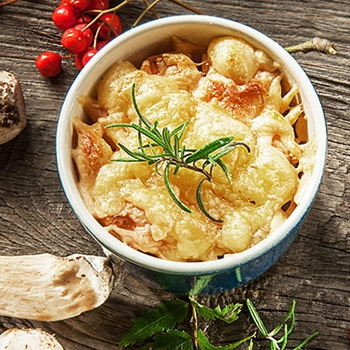Why mushrooms turned green, is it possible to collect and eat green mushrooms: advice from experienced mushroom pickers
 With their gustatory properties, mushrooms conquer everyone who tasted them. The mushroom always remains tasty and aromatic, even if the product is salted with salt alone, without adding seasonings and spices. In terms of the amount of vitamins and useful microelements, mushrooms are ahead of some fruits, vegetables and even meat.
With their gustatory properties, mushrooms conquer everyone who tasted them. The mushroom always remains tasty and aromatic, even if the product is salted with salt alone, without adding seasonings and spices. In terms of the amount of vitamins and useful microelements, mushrooms are ahead of some fruits, vegetables and even meat.
Although mushrooms are milkmen, they are eaten raw, simply sprinkled with salt. In addition, these fruiting bodies do not require prolonged soaking and preliminary boiling, since the milky juice of the mushrooms has absolutely no bitterness (the only exceptions are spruce mushrooms). However, their bitterness gives the mushrooms a special piquancy.
Mushrooms grow in large groups and quickly enough. If in the morning small and young mushrooms were still seen, then the next day these are already large specimens, and everything is in wormholes. Having found a clearing with saffron milk caps, you can collect several baskets. Sometimes novice mushroom pickers do not cut these mushrooms at all, since the mushrooms have turned green, and such a shade frightens them.
Reasons why mushrooms turn green and bitter (with photo)


Why did the mushrooms turn green, for what reasons does such a metamorphosis occur? Note that this feature is quite inherent in these types of mushrooms. For example, with a slight pressure, their pulp changes color. In addition, sometimes in adulthood, there are already greenish circles on the surface of the caps.


There are false mushrooms that differ from the real ones in bright red milky juice, which after a while becomes green. On a cut or break, the flesh of the mushroom is white, and in the air it turns green. Is it possible to collect green mushrooms to eat? It is worth saying that false mushroom is a conditionally edible mushroom, it can also be prepared as a snack for the winter. Experienced mushroom pickers are happy to collect even such representatives, because they practically do not differ from real ones in taste.
If the mushrooms turn green after harvesting, do not worry, you can do whatever you want with them: fry, boil, salt, pickle, freeze and even dry. The color change to green is a natural feature of saffron milk caps, especially if the mushrooms were collected from the coniferous forest. When the color changes, the mushrooms do not lose their taste and natural properties. Therefore, eating green fruit bodies, you can be calm about your health, they will not do any harm.


The reasons why mushrooms turn green and bitter will depend on where they are harvested. As mentioned above, most often in coniferous forests there are mushrooms with a red cap, which grow near pine trees. In adulthood, these mushrooms become greenish and begin to taste bitter, and when cut, the juice that stands out immediately turns green. Such mushrooms can be eaten. For example, they can be fried and then stewed with sour cream, or made mushroom caviar for the winter. Ryzhiks, even in adulthood, are quite edible and useful for the human body. And it is very easy to get rid of bitterness: pour cold water over the mushrooms and leave for 1 hour, stirring with your hands from time to time.


Knowing why cut mushrooms turn green, you can go into the forest and collect this wonderful product without fear. Moreover, saffron milk caps do not have poisonous counterparts that would be dangerous to human health.
We offer you to see a photo showing why mushrooms turn green and under what circumstances this happens.
What should be done if fresh mushrooms are green underneath after harvesting?


Novice cooks, not knowing some of the features, wonder what to do if the mushrooms turn green after picking? Note that this type of mushroom is very delicate and fragile in structure, therefore, if the mushrooms have been in the basket for a long time and have been squeezed, they quickly lose their color, becoming green. When picking, mushroom pickers try to lay the mushrooms with their caps down and not fill the basket too much. It is better to come to the forest the next day and collect more saffron milk caps.


Fresh mushrooms, which have turned green, are quite edible and can be subjected to any cooking process.
One of the options for how you can cook mushrooms for the winter is salting. The mushrooms are cleaned, washed in plenty of water and placed in an enamel or glass container, sprinkling each layer with salt and spices (optional). If you use galvanized or ceramic dishes, mushrooms can turn green and deteriorate altogether, leading to food poisoning.
Some mushroom pickers noticed that when cut, the mushrooms turned green only at the bottom near the leg. Note that this will in no way affect the taste and aroma of mushrooms, since when it comes into contact with air, the milky juice simply changes color to greenish. Experienced fans of "quiet hunting" have noticed this feature long ago and do not pay attention to the changed color. When salted or pickled, an unusual shade of mushrooms in a jar will look like a "fabulous" delicacy.
Can green mushrooms be salted or pickled?


However, the question arises: is it possible to salt or pickle green mushrooms, and will this not affect health? We want to reassure our readers, there is nothing wrong with that. You can safely use green mushrooms in any cooking processes.
Is it possible to eat mushrooms if they turned green during the salting process? If the color change occurred after the product was salted, then it is worth considering what could have influenced this? For example, mushrooms turned green when salted, since the rules for their preparation or storage were not followed.


The mushrooms must be thoroughly pre-cleaned and rinsed well.
- Remove forest debris from the surface: the remains of pine needles, leaves and grass.
- Cut off the lower compacted part of the legs and pour cold water for 20-30 minutes (if the mushrooms are heavily contaminated). With dry salting, mushrooms are not washed at all, but wiped off with a damp kitchen napkin or sponge.
- Place in a colander or place on a large sieve to drain.
- Mushrooms should be boiled in salted water with the addition of citric acid in order to preserve their color (with cold and dry salting, mushrooms are not boiled).


Store the workpiece with salted mushrooms in a cool, dark and well-ventilated room at a temperature not exceeding + 10 ° С. If the air temperature exceeds the permissible norm, the mushrooms turn green or blue, the brine begins to ferment and the workpiece deteriorates.
Why did the salted mushrooms turn green and what to do to prevent this from happening during salting?


There is another reason why salted mushrooms turned green. The mushrooms may not have been completely covered with brine or marinade. Oxidizing in air, salty fruit bodies change color and become greenish. Note that there is nothing wrong with that, and you will not get poisoned by eating such mushrooms. This is a natural process, comparable to the discoloration of apples that have been cut or bitten (the fruit turns brown when exposed to air).


So that the mushrooms do not turn green when salted, they must be completely covered with brine. Look from time to time your mushroom blanks, and if there is not enough liquid in the container, add cold boiled water or press them down with a big pressure.
If the mushrooms turned green during salting, a large amount of spices and spices could contribute to this.
Therefore, experienced chefs advise using only one salt in order to preserve not only the color and taste of the fruit bodies, but also their aroma.


When salted hot, to preserve the color, it is better to boil the mushrooms in salted water with the addition of citric acid. The mushrooms should be completely submerged in boiling water. To do this, put a smaller lid in the pan and put a small load. Usually, during preliminary boiling, mushrooms do not change their color.
If salting is carried out in a cold or dry way, then the mushrooms become greenish in color. This does not in any way affect the preservation and taste of the mushrooms, unless they are completely acidified and the brine has not acquired an unpleasant odor. In this case, the mushrooms should be discarded without delay.

